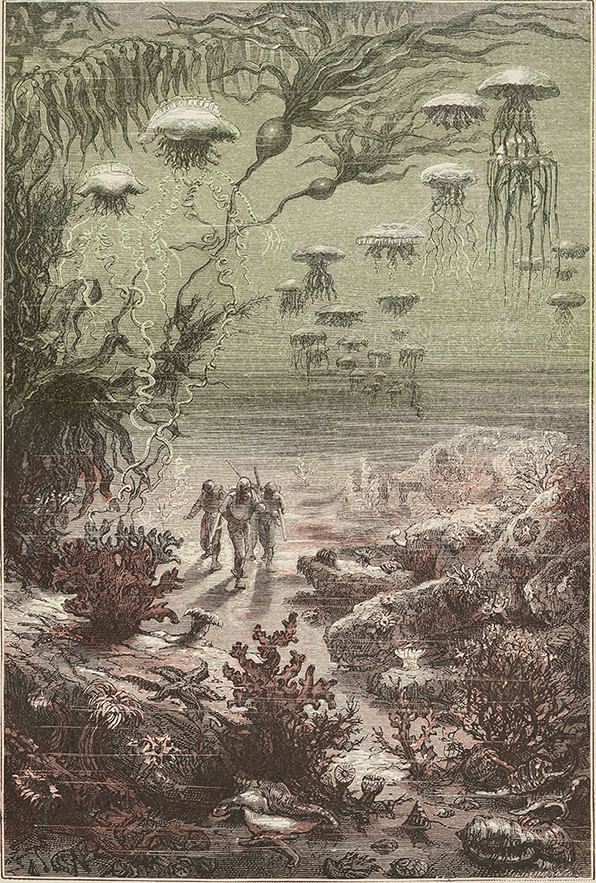
NOVEMBER 10, 2018–FEBRUARY 24, 2019
ABOUT THE EXHIBITION
Alphonse de Neuville (French, 1835–1885), Underwater Landscape of Crespo Island (Paysage sous-marin de l’île Crespo), from Vingt mille lieues sous les mers by Jules Verne, c. 1895. Color wood engraving on paper, 11 1/2 x 15 in. (open). Chapin Library, Williams College
Nature’s extremes—remote, fantastical, and unpredictable—permeated artistic imagery and popular media throughout the nineteenth century. News outlets reported on natural disasters around the globe, researchers defined modern scientific fields, and authors like Jules Verne infused their adventure novels with technological experimentation. Newly founded journals, such as Scientific American and the French La Nature, detailed emerging scientific theories and speculated upon Earth’s origins and its position within the greater cosmos. Influenced in part by the prevalence of scientific inquiry in popular culture, artists also probed nature’s fundamental truths, examining everything from volatile weather patterns and the stars to the earth’s most cavernous depths.
Looking largely to artistic representations that incorporate scientific observation and study, this exhibition explores how depictions of distant landscapes, tumultuous atmospheres, and natural disasters—some documentary, some invented, and many a fusion of the two—enabled viewers to reimagine the boundaries of the world around them. Reveling in nature’s unbridled power, questioning modern scientific theories, or celebrating humanity’s ability to overcome environmental extremes, artists sought to mitigate these dynamic and often destructive forces by transforming the hazardous and unknown into awe-inspiring portrayals of natural phenomena.

